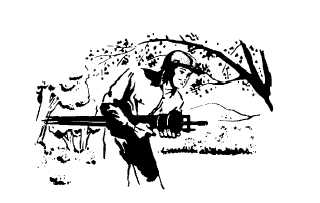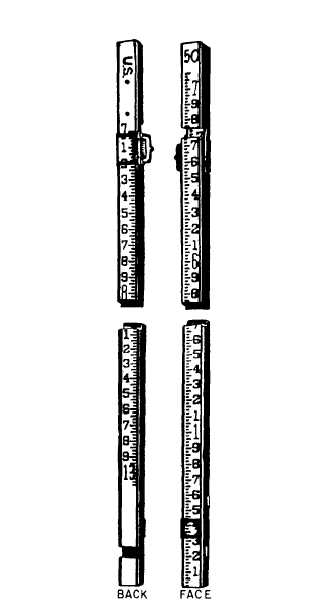CARE OF LEVELS
An engineer's level is a precision instrument containing many delicate and fragile parts. It must therefore be handled gently and with the greatest care at all times; it must never be subjected to shock or jar. Movable parts (if not locked or clamped in place) should work easily and smoothly. If a movable part resists normal pressure, there is something wrong. If you force the part to move, you will probably damage the instrument. You will also cause wear or damage if you excessively tighten clamps and screws.
The only proper place to stow the instrument when it is detached from the tripod is in its own carrying box or case. The carrying case is designed to reduce the effect of jarring to a minimum. It is strongly made and well padded to protect the instrument from damage. Before stowing, the azimuth clamp and leveling screws should be slightly tightened to prevent movement of parts inside the box. When it is being transported in a vehicle, the case containing the instrument should be placed as nearly as possible midway between the front and rear wheels. This is the point where jarring of the wheels has the least effect on the chassis.
You should never lift the instrument out of the case by grasping the telescope. Wrenching the telescope in this manner will damage a number of delicate parts. Instead, lift it out by reaching down and grasping the footplate or the level bar.
When the instrument is attached to the tripod and carried from one point to another, the azimuth clamp and level screws should be set up tight enough to prevent part motion during the transport but loose enough to allow a "give" in case of an accidental bump against some object. When you are carrying the instrument over terrain that is free of possible contacts (across an open field, for example), you may carry it over your shoulder like a rifle. When there are obstacles around, you should carry it as shown in figure 5-7. Carried in this manner, the instrument is always visible

Figure 5-7. - Safest carrying position for instrument when obstacles may be encountered.
to you, and this makes it possible for you to avoid striking it against obstacles.
LEVELING RODS
LEARNING OBJECTIVE: Upon completing this section, you should be able to interpret the readings from a leveling rod.
A leveling rod, in essence, is a tape supported vertically that is used to measure vertical distance (difference in elevation) between a line of sight and a required point above or below it. Although there are several types of rods, the most popular and frequently used is the Philadelphia rod. Figure 5-8 shows the face and back of this rod.

Figure 5-8. - Back and face of Philadelphia leveling rod.
Continue Reading